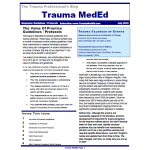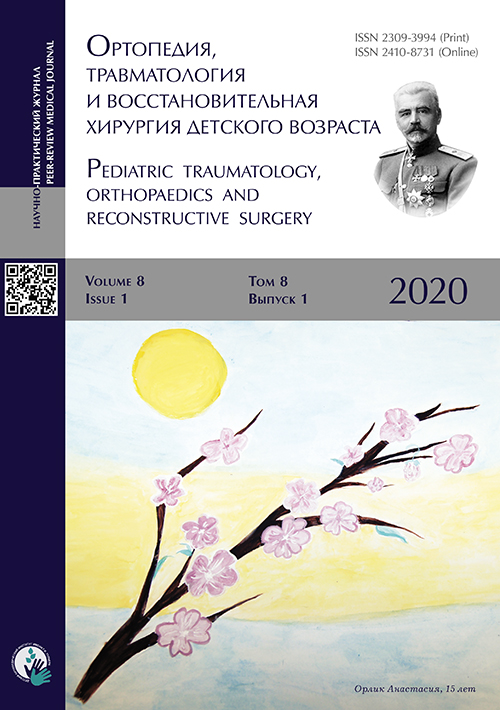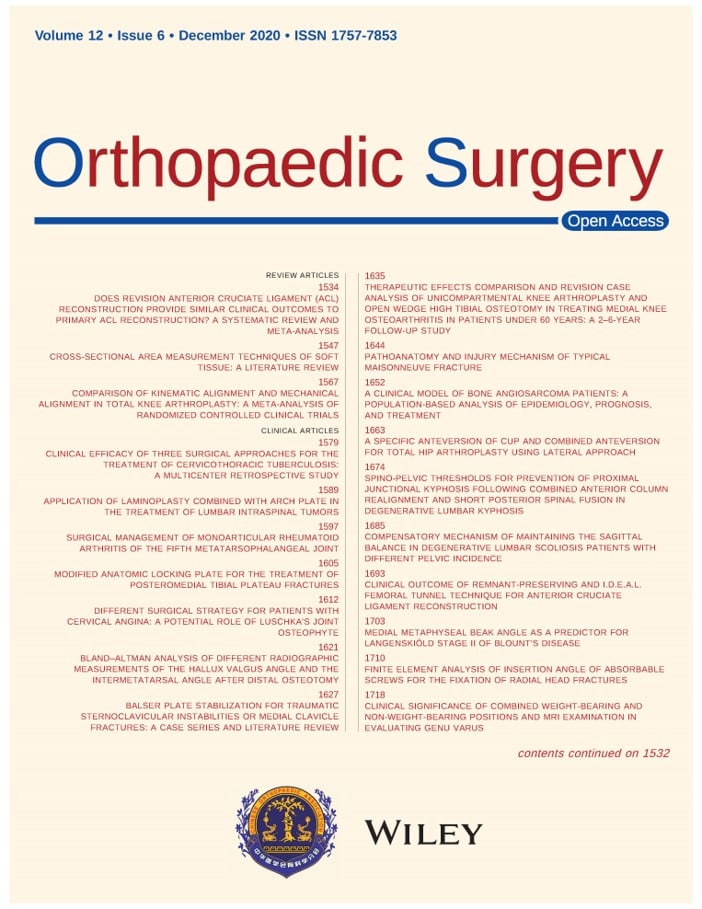![]()
![]()

![]()

![]()

![]()

![]()

![]()

![]()

![]()

![]()

![]()
![]()

![]()

![]()
About the Journal
Open Access Publication
Authors of accepted peer-reviewed articles have the choice to pay a fee to allow perpetual unrestricted online access to their published article to readers globally, immediately upon publication. Authors may take advantage of the open access option at the point of acceptance to ensure that this choice has no influence on the peer review and acceptance process. These articles are subject to the journal’s standard peer-review process and will be accepted or rejected based on their own merit.
Current Issue
Most Popular

About the Journal
Lippincott Williams & Wilkins is a leading international publisher of professional health information for physicians, nurses, specialized clinicians and students. For a complete listing of titles currently published by Lippincott Williams & Wilkins and detailed information about print, online, and other offerings, please visit the LWW Online Store.
Current Issue
Most Popular
moree
![]()

About
JBJS Reviews is an innovative review journal from the publishers of The Journal of Bone & Joint Surgery. This continuously published online journal provides comprehensive, objective, and authoritative review articles written by recognized experts in the field.

About JBJS Open Access
JBJS Open Access (JBJS OA) is an international, peer-reviewed, open-access journal from the publishers of The Journal of Bone & Joint Surgery. The mission of this continuously published online-only journal is to provide a steady flow of comprehensive, objective, and evidence-based basic-science and clinical studies that have the potential to impact orthopaedic care worldwide. JBJS OA maintains the same standards of excellence that are the hallmarks of all products in the JBJS portfolio. JBJS OA expands the capacity of JBJS to meet the evolving needs of the orthopaedic community by disseminating knowledge on an open-access platform that is free of charge for all readers.
Current Issue
Most Popular

About JBJS Journal of Orthopaedics for Physician
Edited by Dagan M. Cloutier, PA-C, JBJS Journal of Orthopaedics for Physician Assistants (JOPA) is a peer-reviewed journal that publishes timely and practical articles covering all orthopaedic subspecialties for physician assistants (PAs) and nurse practitioners (NPs). JOPA provides a unique forum for health-care practitioners to share knowledge and experiences with colleagues in the profession. Authors are encouraged to contribute any original articles that promote PA and NP orthopaedic education. Articles submitted to JOPA undergo double-blinded peer review by a panel of orthopaedic physicians and PAs to ensure accuracy, clinical relevance, and readability.
Current Issue
moree
![]()

About JBJS Essential Surgical Techniques
JBJS Essential Surgical Techniques (JBJS EST) is the premier journal describing how to perform orthopaedic surgical procedures, verified by evidence-based outcomes, vetted by peer review, while utilizing online delivery, imagery and video to optimize the educational experience, thereby enhancing patient care.
Current Issue
moree
![]()

About JBJS Case Connector
Current Issue
moree
![]()
Most Popular

About the Journal
JBI Evidence Synthesis is an official journal of JBI. It is an international peer-reviewed, online journal that publishes manuscripts encompassing evidence synthesis and healthcare. JBI Evidence Synthesis seeks to disseminate rigorous, high-quality research that provides the best available evidence to inform policy and practice through the science and conduct of systematic and scoping reviews. The journal publishes systematic and scoping review protocols, diverse types of systematic reviews, and scoping reviews covering multi-disciplinary healthcare-related topics that follow methodology and methods developed by JBI. The journal also publishes editorials, letters to the editor as well as original applied research and discussion papers examining synthesis methods. JBI Evidence Synthesis does not accept systematic reviews of in vitro or animal studies.
Current Issue
Most Popular
moree
![]()
Current Issue
Most Popular
moree
![]()

Journal Aims and Scope
JAAOS: Global Research & Reviews (JAAOS Global) will critically evaluate and synthesize up-to-date information on the diagnosis and management of musculoskeletal conditions, reflecting the current state of orthopaedic practice and patient care. The journal publishes review articles, research articles and clinical trials, surgical techniques, case reports, and commentary for the benefit of orthopaedic surgeons at all levels of their careers, from residency on, as well as orthopaedic researchers and healthcare professionals with an interest in orthopaedics.
Current Issue
Most Popular

About the Journal
Lippincott’s Bone and Joint Newsletter provides breaking research in musculoskeletal medicine and encompasses pain syndromes that fall within the differential diagnosis of bone and joint problems. The Newsletter offers AMA PRA Category 1 Credits™ in an annual series of 11 issues for up to 16.5 credits/year.
Current Issue
Most Popular
moree
![]()

About the Journal
Current Issue
Most Popular

About the Journal
Techniques in Orthopaedics is a peer-reviewed journal that provides information on the latest orthopaedic procedures as they are devised and used by leading orthopaedic surgeons. Articles also report on orthopaedic technology, as well as relevant health policy, legal and financial issues.
Techniques in Orthopaedics publishes four times a year. Issues are organized around a symposium on a single topic and integrate clinical and scientific concepts. Each issue is assigned a guest editor who is engaged with a broad view of topics including unresolved issues, evolving surgical techniques and research activities.
Current Issue
Most Popular
moree
![]()

About the Journal
Current Issue
![]()
Most Popular
![]()

About the Journal
Techniques in Foot & Ankle Surgery offers a unique opportunity to master the most innovative and successful surgical techniques for correction of foot and ankle disorders. Featuring contributions from the world’s foremost orthopaedic surgeons and podiatrists, this quarterly journal supplies step-by-step details on these techniques. The contributors explain the rationale, indications, and contraindications for each procedure, identify the pitfalls and potential complications, and provide invaluable tips for improving results. The journal is illustrated cover to cover with intraoperative photographs and drawings, including several in full color.
Current Issue
Most Popular

About the Journal
Prosthetics and Orthotics International is the official journal of the International Society for Prosthetics and Orthotics (ISPO).
Prosthetics and Orthotics International is one of the major international scientific publications in the field of prosthetics and orthotics. It is an international, multidisciplinary journal for professionals who have an interest in the medical, clinical, rehabilitation, technical, educational and research aspects of prosthetics, orthotics and rehabilitation engineering, as well as their related topics. The journal is free of charge to ISPO members.
Current Issue
Most Popular

About the Journal
Aims and Scope
OTA International is an international, open access, orthopaedic trauma journal published on behalf of the Orthopaedic Trauma Association (OTA). The journal aims are to further knowledge, foster innovation, support research and education and promote quality and good clinical practice in the field of orthopaedic trauma within a global setting.
Most Popular

About the Journal
The journal highlights important recent developments from the world’s leading clinical and research institutions. The journal publishes peer-reviewed papers on the diagnosis and treatment of pediatric orthopedic disorders.
Current Issue
Most Popular

About the Journal
Current Issue

About the Journal
Journal of Orthopaedic Trauma is devoted exclusively to the diagnosis and management of hard and soft tissue trauma, including injuries to bone, muscle, ligament, and tendons, as well as spinal cord injuries. Under the guidance of a distinguished international board of editors, the journal provides the most current information on diagnostic techniques, new and improved surgical instruments and procedures, surgical implants and prosthetic devices, bioplastics and biometals; and physical therapy and rehabilitation.
Most Popular

About the journal
Orthopaedics & Traumatology: Surgery & Research (OTSR) publishes original scientific work in English related to all domains of orthopaedics. Original articles, Reviews, Technical notes and Concise follow-up of a former OTSR study are published in English in electronic form only and indexed in the main international databases.
![]()

